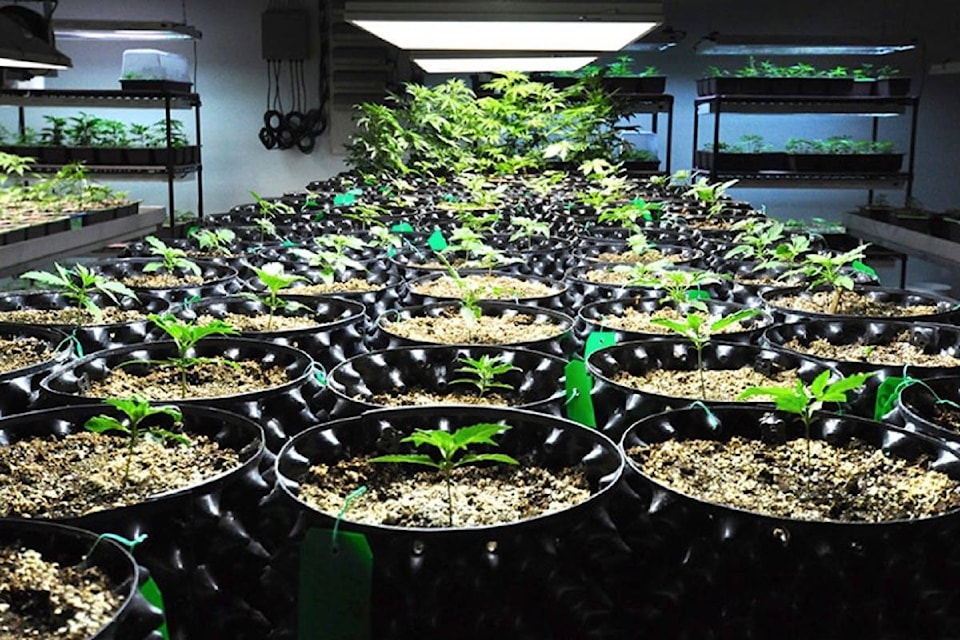With CanadaB��Ԫ������ַ�s marijuana legalization laws slated for July 1, 2018, there continue to be questions about how those changes will affect farmland use in the future.
B��Ԫ������ַ�ItB��Ԫ������ַ�s not quite clear yet how the dust is going to settle,B��Ԫ������ַ� said Lynne Belle-Isle, a research affiliate with the Canadian Institute for Substance Use Research at the University of Victoria.
Belle-Isle has been keeping a close eye on Bill C-45 (the Cannabis Act), which is currently in the Senate. The specifics are still subject to change, but a Health Canada discussion paper from Nov. 2017 gives some insight into what the Senate is considering.
The proposed Cannabis Act covers the cultivation, processing and sale of marijuana. It specifies different regulations for large and small-scale producers, as well as nurseries and industrial hemp growers. It would require large-scale producers to have physical barriers (walls or fences), surveillance cameras and alarms. Small-scale producers would still need physical barriers, but would not have to use cameras or alarms. Hemp growers would require no more security than other crops.
While outdoor growing is currently illegal, the new law would open that door.
Ken Marriette, the communications co-ordinator with Citizens Protecting Agricultural Land (CPAL) said he would be less opposed to marijuana grown outdoors, but B��Ԫ������ַ�guess what, the producers wonB��Ԫ������ַ�t do it.B��Ԫ������ַ�
In B.C., marijuana growing is considered an acceptable farm use for land held within the Agricultural Land Reserve, but the proposals to date have been large-scale indoor grow-ops, which MarrietteB��Ԫ������ַ�s group believes is a waste of arable land. He said for financial reasons, producers were incentivized to grow indoors because lights could be on 24/7. He said the high risk of theft would also make it unlikely.
B��Ԫ������ַ�Can you imagine if marijuana was growing outdoors on a 30-acre property? What would you build around it? Fencing, or the Berlin Wall.B��Ԫ������ַ�
In an interview last week, Central Saanich Chief Administrative Officer Patrick Robins explained that since the province has deemed marijuana an agricultural use of ALR land, the District cannot stop growers. However, he said the District can regulate how grow ops are built and run. The District can limit site coverage (how much of the land is used for the operation), specify stormwater management strategies and require different kinds of buffers between the marijuana facility and neighbouring schools, roads, etc.
Within Central Saanich, there are industrial zones outside the ALR that could also be used for growing marijuana. Since these are entirely within local jurisdiction, Central Saanich can both regulate and restrict grow ops on these lands. Staff are looking to supply a report to mayor and council in the coming weeks which looks at how other jurisdictions will adapt to legalization.
Belle-Isle added that beyond the land use issue, the provisions for small-scale producers will open up a market for craft cannabis, similar to micro-breweries for beer.
B��Ԫ������ַ�The craft cannabis community has really been advocating for the right to get licenses to produce cannabis to produce on a smaller scale than these massive corporations that are currently doing it.B��Ԫ������ַ�
B��Ԫ������ַ�ItB��Ԫ������ַ�s good news for B.C. because a lot of people rely on cannabis production to make a living, said Belle-Isle. B��Ԫ������ַ�Hopefully theyB��Ԫ������ַ�ll be able to transition into a legal market.B��Ԫ������ַ�
reporter@peninsulanewsreview.com
Like us on and follow us on



